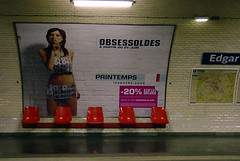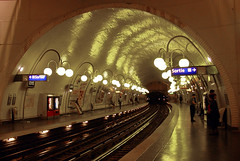The Metropolitan Transportation Authority is Not Alone in its Financial Struggles
(Source: The Brookings Institute)
![]()
Transit agencies across the US are facing service cutbacks and fare increases in order to close their budget gaps. The largest, New York’s Metropolitan Transportation Authority (MTA), is no exception. In its 2009 budget, the agency proposes painful service cutbacks and fare increases to help cover a projected deficit of around $1.5 billion. Meanwhile, the state senate failed to unite around a rescue plan last week. And while Washington did provide $8.4 billion in stimulus funds for transit this year (with over $1 billion allocated to the MTA), this money can be spent only on capital improvement projects and not to finance gaps in day-to-day operations.
An op-ed by the Brookings Institution’s Robert Puentes and Emilia Istrate offers recommendations for closing the MTA’s budget gap. They recommend raising state support to national levels and urge the federal government to step aside and empower metropolitan agencies to spend their federal money in ways that best meet their own needs, such as operating expenses. Over the long term, some form of federal competitive funding for operating assistance also might provide the right incentive – or reward – to states and localities to commit to funding transit.
Extract from the op-ed:
Why the disconnect?
The response in Washington is predictably stubborn: Recovery money cannot be used for operating expenses because operating is not a federal role.
You would think that the pressure of this policy would lead to transit agencies that are self-sufficient – where passenger fares pay the full costs of operating the system.
But large metropolitan transit agencies generally “recover” only about one-third of their costs from subway riders and about one-quarter from bus passengers. The MTA has the highest cost-recovery ratio among all subway operators – its fares pay for two-thirds of operating costs.
For large bus systems, the MTA’s New York City Transit ranks second only to New Jersey‘s in terms of the share of operating costs paid for by riders. The Long Island Rail Road is the seventh among the 21 commuter rail systems in the country, recovering from fares close to half of its operating costs.
So what should be done to close the MTA’s budget gap?
For one thing, lawmakers in Albany need to recognize that the state contributes a lower proportion of the MTA’s budget from its general revenue than other states provide to their transit agencies from general revenue. In New York, about 4 percent of all the MTA operating costs are covered by the state budget; in other states, transit agencies are getting closer to 6 percent.
Raising state general fund support to national levels would be a good place to start helping the MTA.
Another idea is to get Washington to help. Not in doling out more money, but in stepping aside and empowering metropolitan agencies to spend their federal money in ways that best meet their own needs.
Click here to read the entire article.








